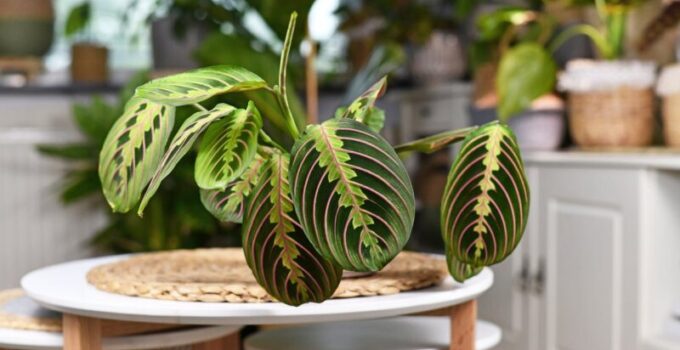Many people must have come across a prayer plant, considering how common they are today. A classic prayer plant is a houseplant that can be recognized by a person by its feathery painterly leaves. There are various types of prayer plants with a diversified range of markings, foliage, and texture on their leaves. This is a household name for several gardeners; even though you might not be a gardener, we are sure you will easily be able to recognize this place in the blink of an eye when you come across it.
With a unique tendency to fold leaves in the evening, it is named so because of its close resemblance to hands being folded at the time of prayer. Every prayer plant has a unique set of features. There is an estimated count of 40-50 prayer-plants that a person can come across; this article will enlist some of the common prayer plants you might know or not know of. Get ready to be a part of a beautiful journey with prayer-plants at https://bloomboxusa.com/collections/prayer-plants.
Page Contents
1. Maranta leconeura ‘Kim’
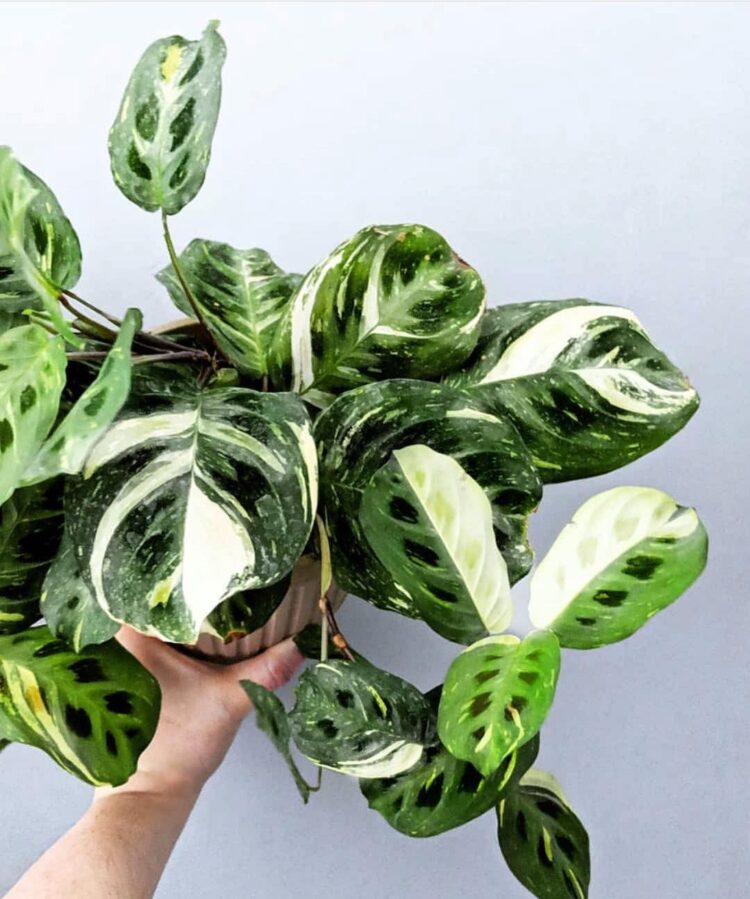
Source: pinterest.at
With innumerable prayer plants available in the market, the most common of them all is Maranta Leconeu. It has a wide variety of colour combinations and foliage patterns and is native to rainforests in Brazil, requiring a minimum temperature of around 15 degrees Celsius to grow. This plant can easily be recognized by unique variegation on the foliage. Purple spots on them help them to stay apart from other prayer plants. Its leaves have creamy white streaks and light-coloured foliage. Its height can reach about 3 feet.
2. Maranta leuconeura ‘Kerchoveana’
Again, it is one of the most common varieties of the Maranta genus that is readily available to the public. You might know it by the name ‘rabbit’s foot due to its texture. A person can easily recognize it by a green marking on both the sides of the leaves of this plant with a central vein. The upper surface of this prayer plant is velvety with patchy brown splotches on it.
3. Maranta leuconeura ‘Silver Feather’
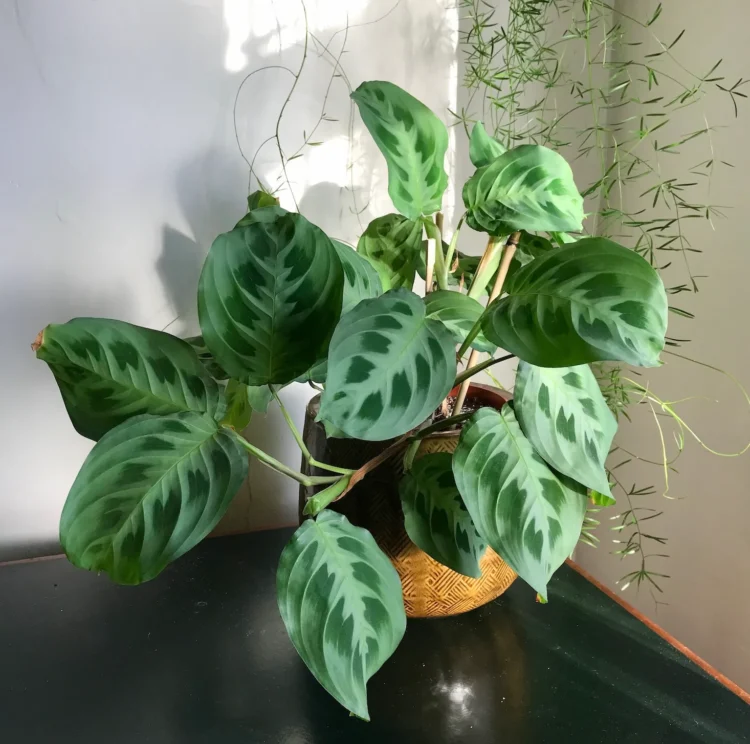
Source: houseplanthouse.com
It is a bit different type of prayer plant compared to its renowned counterpart ‘Silver band.’ A featherlike wide band in the middle bottom of the leaf helps to distinguish this plant from other plants. It has a blue-green light greyish radiating lateral vein on its upper surface. The leaves are known to be of dark greenish-black colour.
4. Maranta leuconeura ‘Marisela’
A person can find this plant as a result of its appealing oval-shaped leaves. It is creamy or light green with a herringbone-like pattern coupled with light yellow veins. Small flowers start appearing on the slender stalk of this prayer plant as it matures. It is an ideal choice to put in hanging baskets as a result of its trailing habit. These plants can grow up to 12-16 inches high.
5. Goeppertia crocata
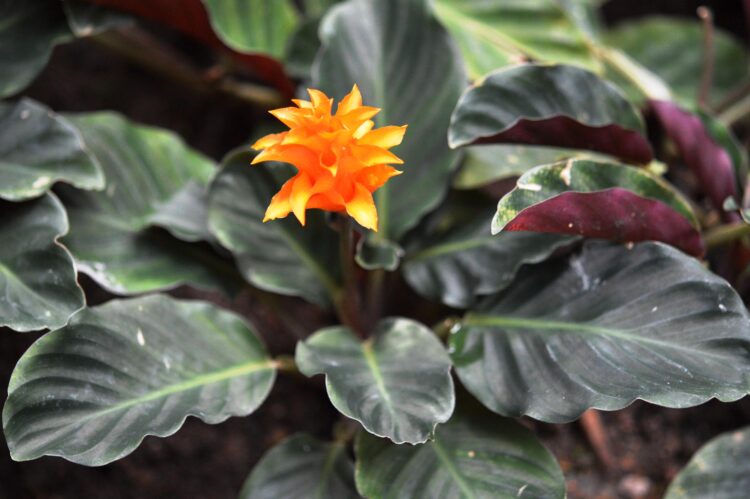
Source: efloraofindia.com
This species of prayer plant can easily be distinguished from other prayer plants by their wavy texture. It is also called saffron-coloured calathea or eternal flame plant. The epithet ‘crocata’ literally translates to ‘saffron-coloured.’ The nickname of this plant refers to its bright golden-orange-coloured blooming flowers. It is known for its dark green, large leaves with a purplish bottom. It is a vertically growing plant and can reach a height of about 24-30 inches.
The best prayer-plants to make your home peaceful
The prayer plant is among the most easily identified tropical plants, because of its stunning decorative flowers. Vibrant green velvety petals with various coloured flowers. The prayer plant is a slow-growing indoor plant that can grow up to a foot tall. They’re pretty common as houseplants, then they can be grown and maintained at any time of the year when the, although they’re not simple to keep growing, blossoming, and expanding. Typically, the prayer-plants give a calmer and more devotional feel.
Know the best way to cultivate devotional plants
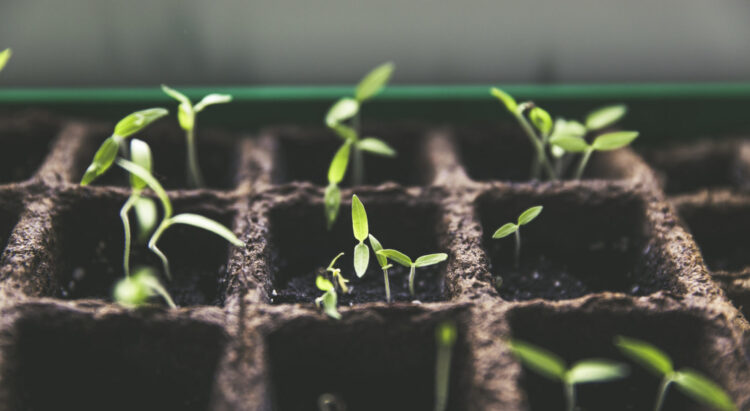
Source: first15.org
It’s not as difficult to learn and understand the way to cultivate devotional plants as it is to successfully propagate plants because they can grow quickly. You can reproduce your devotional plant in different ways. Water cultivation is one of the most lucrative and successful ways.
How to Grow spiritual plants?
We have all these potting soils and their varieties in mind when people think about growing prayer-plants. The same method is used to generate variegated variants or other unique sorts of these types. Other members of the prayer family, such as calathea. These, on the other hand, do not propagate in the same manner as a “normal” prayer plant might. Root division is perhaps the most popular method of propagation.
Planting of spiritual trees in different Forms
- Water cultivation
- Cultivating from seed
- Root division reproduction
- Cultivating in soil
Prayer or spiritual plant cultivation in water

Source: cru.org
This is the most straightforward way to grow prayer-plants. Having a plant harmed can be a sad event for many species of plants; however, with prayer plants, it’s frequently a fantastic opportunity to reproduce. You don’t need rooting hormones or any other supplements to thrive.
Seed propagation of a prayer plant
You can also try duplicating your spiritual plant from seed if you’re lucky enough to have it bloom. It’s quite satisfying to watch something grow from seed. However, this method is not as straightforward as other ways of producing prayer-plants.
Root division of plant cultivation
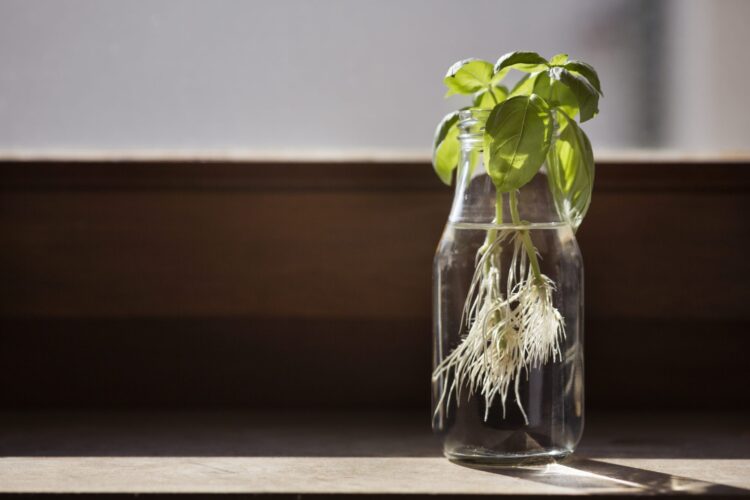
Source: cru.org
Root division reproduction is one of the successful and effective methods to create more roots or plants from a single root. It will give a guaranteed success in planting. But you have to take care of it very carefully. Watering regularly will help the plant to grow faster. Root division cultivation is highly recommended by the garner who has grown their garden to the next level.
Conclusion
Prayer plants are beautiful but require a high level of maintenance. Raising such plants might be difficult, but it is undoubtedly a rewarding experience with nature and elegant leaf patterns. You can also show these great plants to your friends to start a fantastic conversation about greenery.

